June 30, 2025

The article examines how motivating operations can significantly enhance the outcomes of Applied Behavior Analysis (ABA) therapy. Research indicates a growing demand for effective therapeutic strategies, making it essential to explore methods that foster participant engagement. Strategies such as:
are not merely suggestions; they are pivotal in improving the effectiveness of treatment. These methods have been shown to elevate motivation and progress in therapy, underscoring their importance in the ABA field.
Have you considered how these strategies could transform your approach to ABA therapy? By integrating these techniques, practitioners can create a more engaging and effective therapeutic environment. The evidence is clear: employing such strategies leads to better participant outcomes, fostering a more dynamic and responsive treatment process.
In conclusion, the implementation of motivating operations within ABA therapy is not just beneficial; it is essential for maximizing treatment efficacy. As the field evolves, staying informed about these strategies is crucial for practitioners aiming to enhance their practice. Embrace the potential of motivating operations and witness the positive impact on your therapeutic outcomes.
The landscape of Applied Behavior Analysis (ABA) therapy is witnessing a remarkable transformation, underscored by a significant increase in demand for Board Certified Behavior Analysts (BCBAs). This surge compels practitioners to explore innovative strategies that not only enhance client engagement but also improve overall effectiveness in therapy.
As we delve into the intricate world of ABA interventions, we will examine nine motivating operations that elevate the quality of therapeutic practices while addressing the unique needs of clients.
What key tactics can revolutionize traditional approaches into dynamic, client-centered experiences? It is time to consider how these strategies can redefine the future of ABA therapy.
The demand for (BCBAs) is projected to grow by 22% over the next decade, highlighting an urgent need for effective recruitment strategies. Hire ABA offers a specialized recruitment platform that simplifies the job search for BCBAs. By leveraging advanced algorithms that analyze candidate profiles and job requirements, along with , Hire ABA connects candidates with top-tier job opportunities tailored to their skills, preferences, and career aspirations.
Our team meticulously assesses each resume to ensure optimal job matching through advanced job fit scoring, identifying opportunities that align with candidates' experience and desired locations. This streamlined process not only saves time for job seekers but also ensures that employers find the right talent efficiently. As the demand for BCBAs continues to rise across various sectors, including healthcare, education, and nonprofit organizations, addressing this need is paramount.
Utilizing Hire ABA's customized job matching solutions and extensive support can significantly improve recruitment results. This guarantees that both candidates and employers benefit from a more focused approach to hiring in the ABA landscape. Are you ready to enhance your recruitment strategy and connect with the right talent? Explore how Hire ABA can transform your hiring process today.
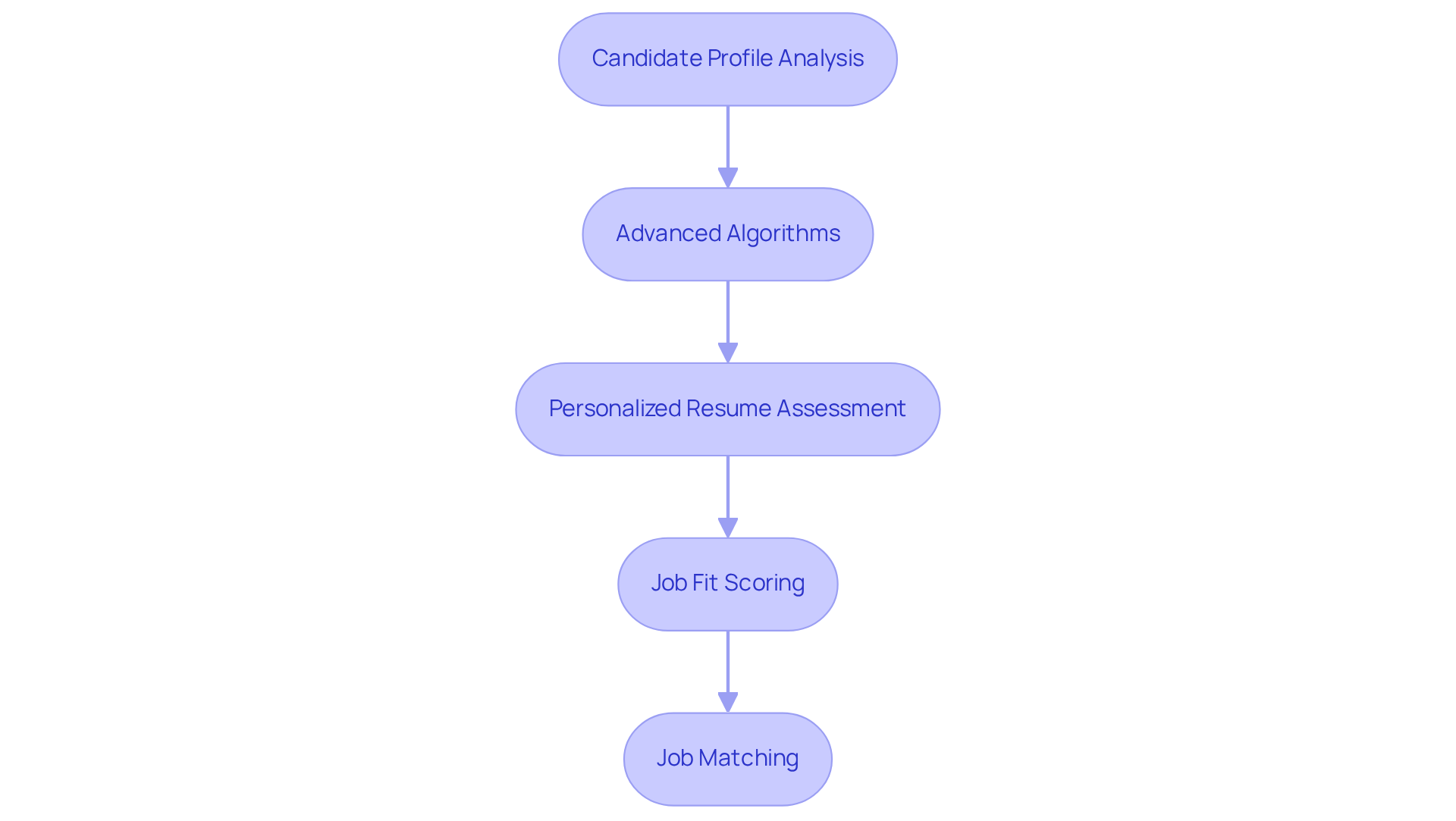
Establishing clear, attainable objectives is essential in ABA treatment. By employing the SMART criteria—Specific, Measurable, Achievable, Relevant, and Time-bound—therapists can craft personalized goals that resonate with individuals. This approach not only enhances participant involvement but also serves as a framework for , ensuring that treatment remains focused and effective. Regularly revisiting and adjusting these objectives based on participant feedback significantly strengthens the therapeutic alliance.
![]()
Effective motivating operations are essential for enhancing participant motivation in ABA therapy. By identifying and utilizing preferred reinforcers—such as verbal praise, tokens, or access to enjoyable activities—therapists can significantly increase motivating operations that enhance the likelihood of individuals engaging in desired behaviors. Research shows that varying the as motivating operations not only maintains participant interest but also improves the overall effectiveness of interventions. For instance, studies show that consumers exhibit higher motivation levels when exposed to a diverse array of reinforcers, leading to improved engagement and compliance.
According to recent findings, clients demonstrate a 30% increase in motivation when multiple reinforcement options are available, compared to a single type of reinforcer. Incorporating techniques like differential reinforcement can further promote compliance while minimizing undesired behaviors, fostering a more positive therapeutic environment. This approach allows therapists to reinforce desired behaviors while systematically reducing problematic ones.
Furthermore, comprehending the particular kinds of reinforcers that connect with individual clients—be they social, tangible, or activity-oriented—can customize interventions to address their distinct motivating operations, ultimately leading to improved results in ABA practices. As Dr. Temple Grandin states, 'Different, not less,' emphasizing the significance of personalized methods in treatment.
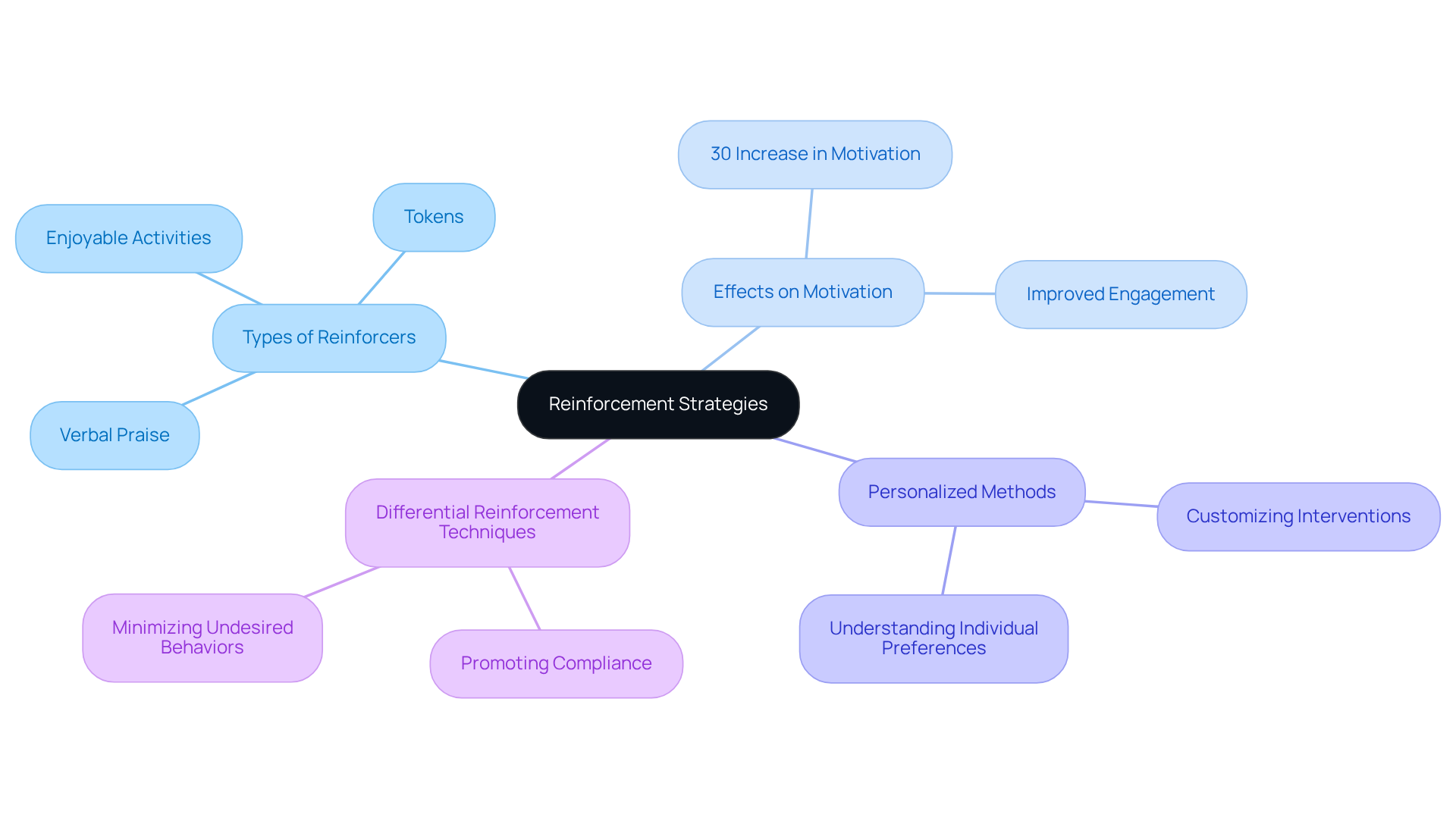
The anticipated (BCBAs) is projected to rise by 25% by 2026, underscoring the urgency for effective recruitment strategies. Modifying the therapy environment is crucial for motivating operations that enhance outcomes in Applied Behavior Analysis (ABA) sessions.
Strategic arrangements can serve as motivating operations by minimizing distractions through:
These factors can significantly influence customer involvement. A structured environment fosters a sense of security, enabling individuals to concentrate more effectively on motivating operations during therapeutic activities.
Studies show that participants in adapted treatment environments benefit from motivating operations, leading to greater levels of concentration and involvement, which are vital for achieving effective learning results. Routine evaluations of the treatment environment are essential for recognizing areas requiring enhancement and are crucial motivating operations that guarantee the setting stays supportive of learning and development.
As Daiana Campani notes, 'Every home modification must be discussed and approved by individuals and their caregivers to produce targeted and lasting change.' This cooperative method not only improves the therapeutic experience but also empowers individuals and their families in the process.
Furthermore, research has long shown that home assessment and modification is an effective intervention to prevent falls and fall-related injuries, with falls representing 31% of incidents related to environmental factors. Establishing supportive treatment environments is more significant than ever, especially in light of the increasing demand for BCBAs.
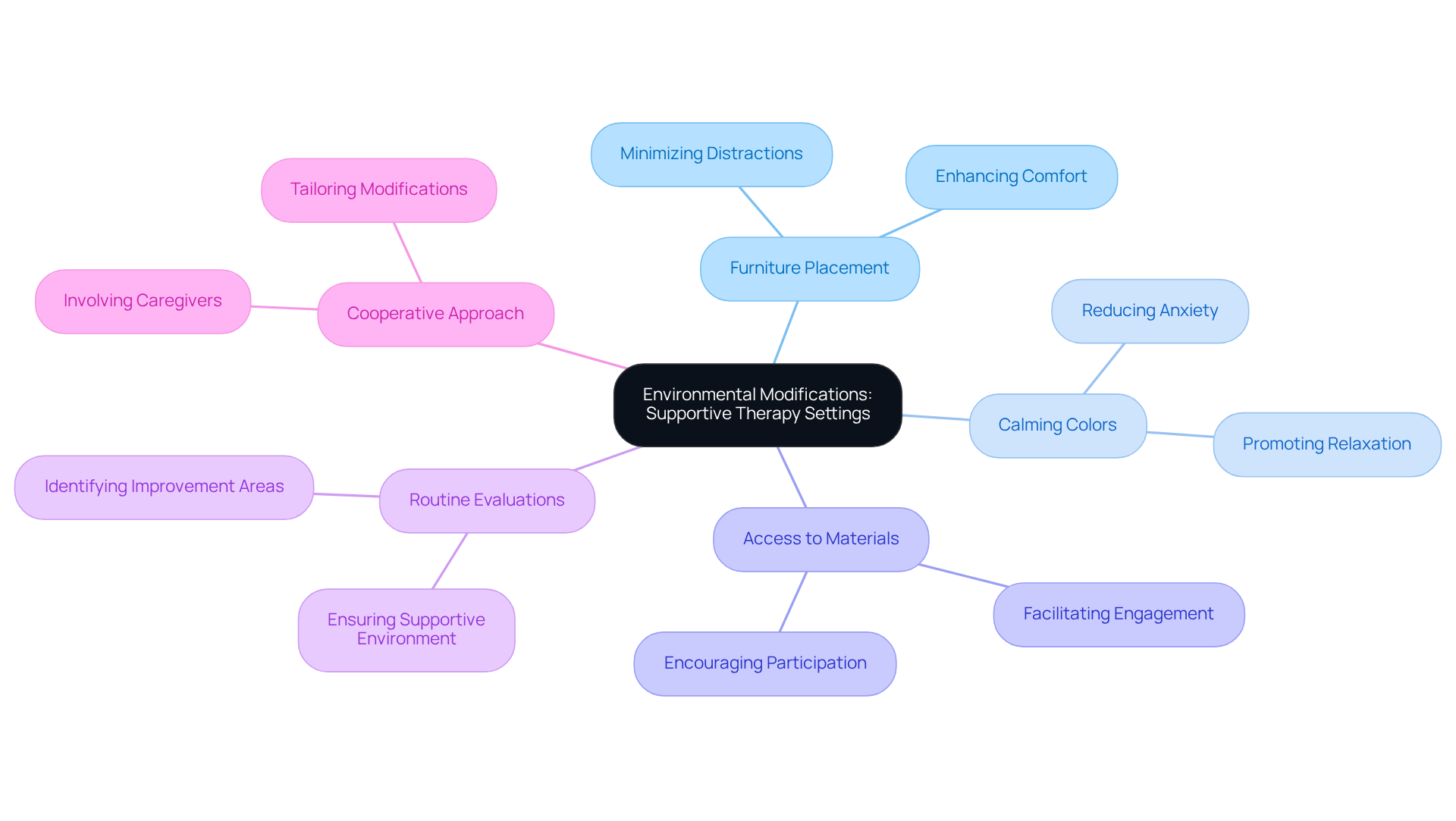
Integrating choice opportunities into ABA treatment significantly boosts participant engagement. Did you know that individuals engaged in shared decision-making report greater treatment satisfaction (effect size = 0.34) and completion rates (effect size = 1.37)? By permitting individuals to make choices about activities, reinforcers, or the order of tasks, therapists enable them to take an active part in their treatment. This method cultivates a sense of ownership and enhances motivation through motivating operations, as individuals are more likely to participate in tasks they have chosen themselves.
Research emphasizes the beneficial influence of personal choice on motivating operations related to involvement in behavioral counseling. Consistently evaluating preferences customizes these selections to personal requirements and strengthens the supportive relationship, which is essential for enhanced results like adherence and behavior modification in ABA practice.
As Oliver Lindhiem observes, "individuals who participated in shared decision making... demonstrated higher treatment satisfaction, increased completion rates, and superior clinical outcomes." While the benefits of are clear, it is also important to consider potential downsides, such as the variability in individual responses to choice interventions, to provide a balanced view of their implications.
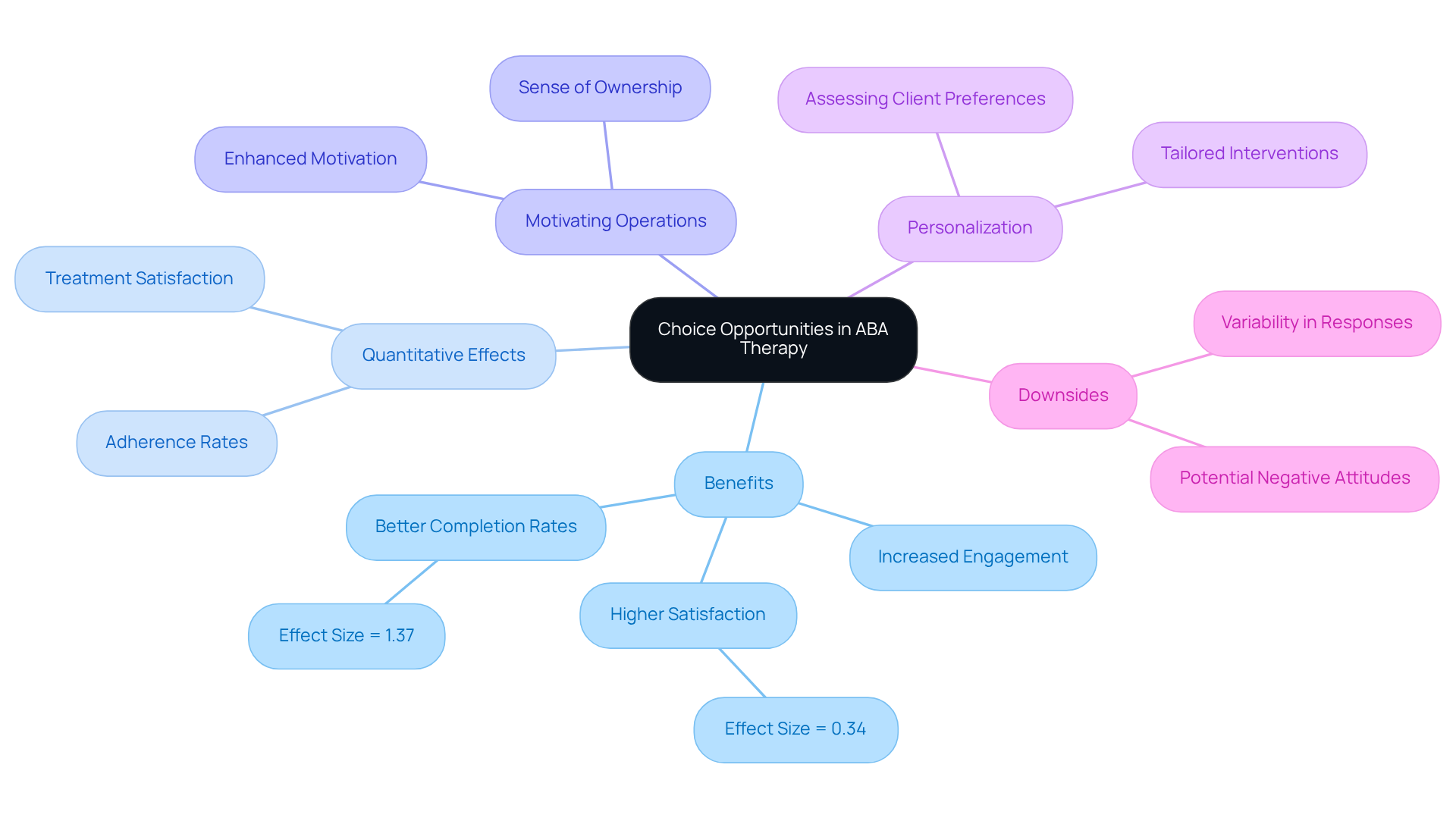
Promoting social interaction as a form of motivating operations within ABA therapy is essential for enhancing participant outcomes. Therapists can effectively facilitate social skills development through structured activities, peer interactions, and role-playing scenarios. Research indicates that programs incorporating motivating operations and peer engagement lead to significant improvements in communication skills and social responsiveness among children with autism.
For instance, the case study on 'Facilitating Peer Interaction in ABA Therapy' discusses effective strategies for promoting peer interaction through structured social skills training and peer-mediated interventions. By creating opportunities for individuals to practice social skills in a supportive environment, therapists enable them to generalize these skills to real-world situations. This approach not only enhances communication abilities but also fosters meaningful relationships, contributing to overall emotional well-being and independence.
Furthermore, organized social skills training sessions, as detailed in the case study 'How to Incorporate Social Skills Training into ABA Sessions,' have been demonstrated to enhance children's interactions and relationships. This emphasizes the significance of in motivating operations to achieve successful results in ABA.
Embracing individual differences, as Temple Grandin states, 'I am different, not less,' highlights the importance of social skills development in fostering inclusive attitudes and reducing stigma.

Establishing efficient feedback systems is crucial in ABA practices, as they significantly impact motivating operations and participant motivation. Did you know that only 13.9% of clinicians effectively utilize standardized progress measures? This statistic underscores the urgent need for better implementation of feedback mechanisms. Consistently offering constructive feedback enables individuals to understand their accomplishments while recognizing areas for enhancement. Various methods can achieve this, including:
For instance, positive reinforcement—a cornerstone of ABA therapy—plays a vital role in behavior change by encouraging children to articulate their needs clearly. This fosters a sense of accomplishment and motivates them to pursue their goals.
Furthermore, continual evaluations empower therapists to modify treatment plans based on patient feedback, ensuring interventions remain pertinent and effective. By fostering an environment where input is actively sought and applied, therapists can enhance participant involvement, leading to improved treatment results. Techniques such as role-playing create safe spaces for practicing social interactions, aiding children in grasping feedback contexts. Additionally, emotional regulation training is essential for helping children understand feedback, which is crucial for their development.
Overall, feedback systems not only enhance motivation through motivating operations but also enable individuals to take responsibility for their progress. This ultimately aids in their . Are you ready to consider how effective feedback can transform your ABA practice?
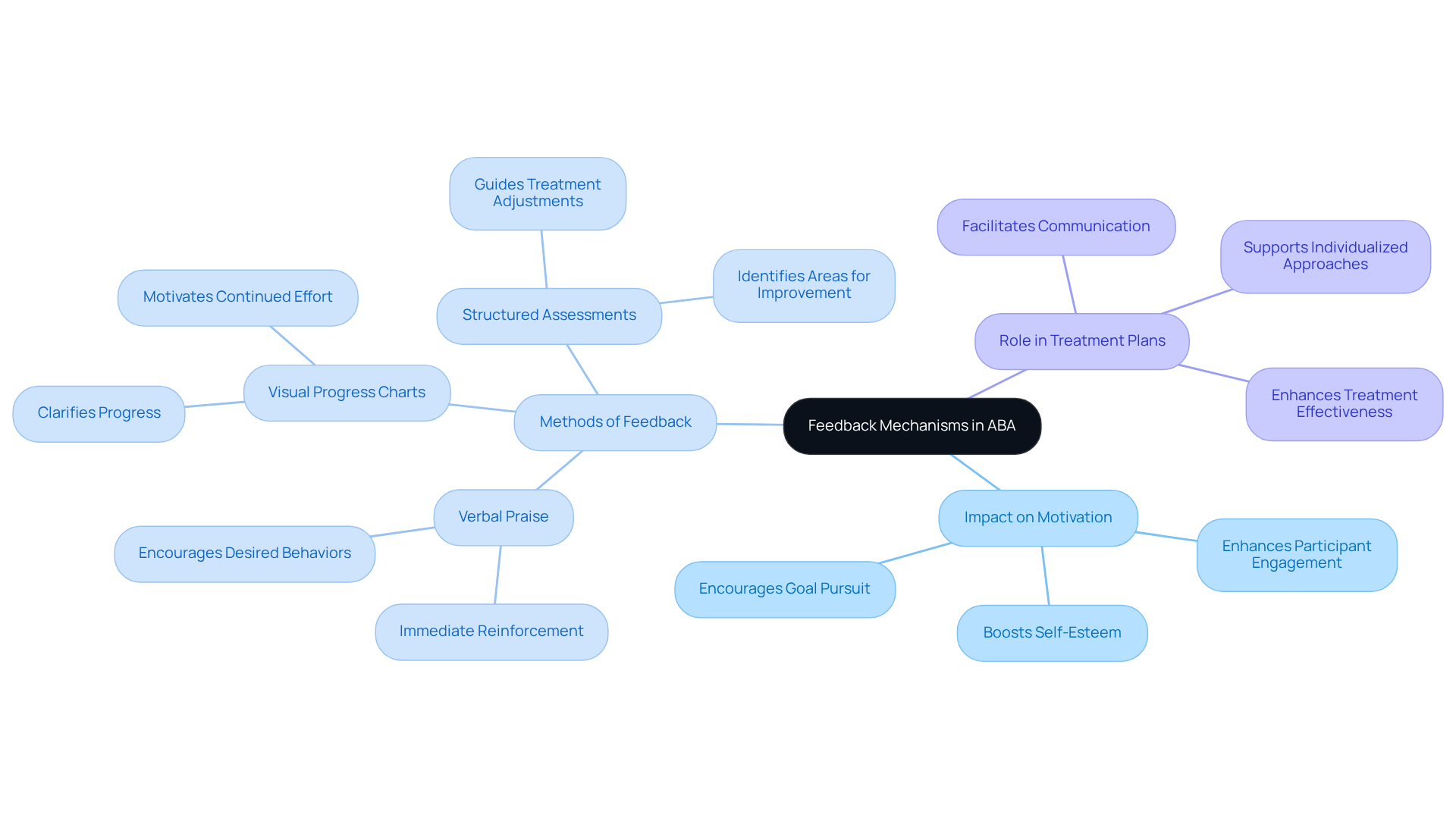
Visual aids are essential for enhancing comprehension and involvement in ABA treatment. Tools such as picture schedules, visual prompts, and graphic organizers facilitate better information processing for individuals. Research indicates that the use of visual aids can significantly increase participant engagement; studies show that visual schedules can enhance on-task behaviors by up to 30% and reduce anxiety during sessions.
Customizing these visual aids to align with user preferences not only boosts their effectiveness but also fosters a sense of ownership and engagement in the therapeutic process. Regular revisions to these tools, as highlighted in recent research, ensure they remain relevant and engaging, ultimately leading to more successful treatment outcomes.
Healthcare employers are strongly encouraged to implement these strategies by consistently assessing and adapting visual supports to meet the evolving needs of those they serve.
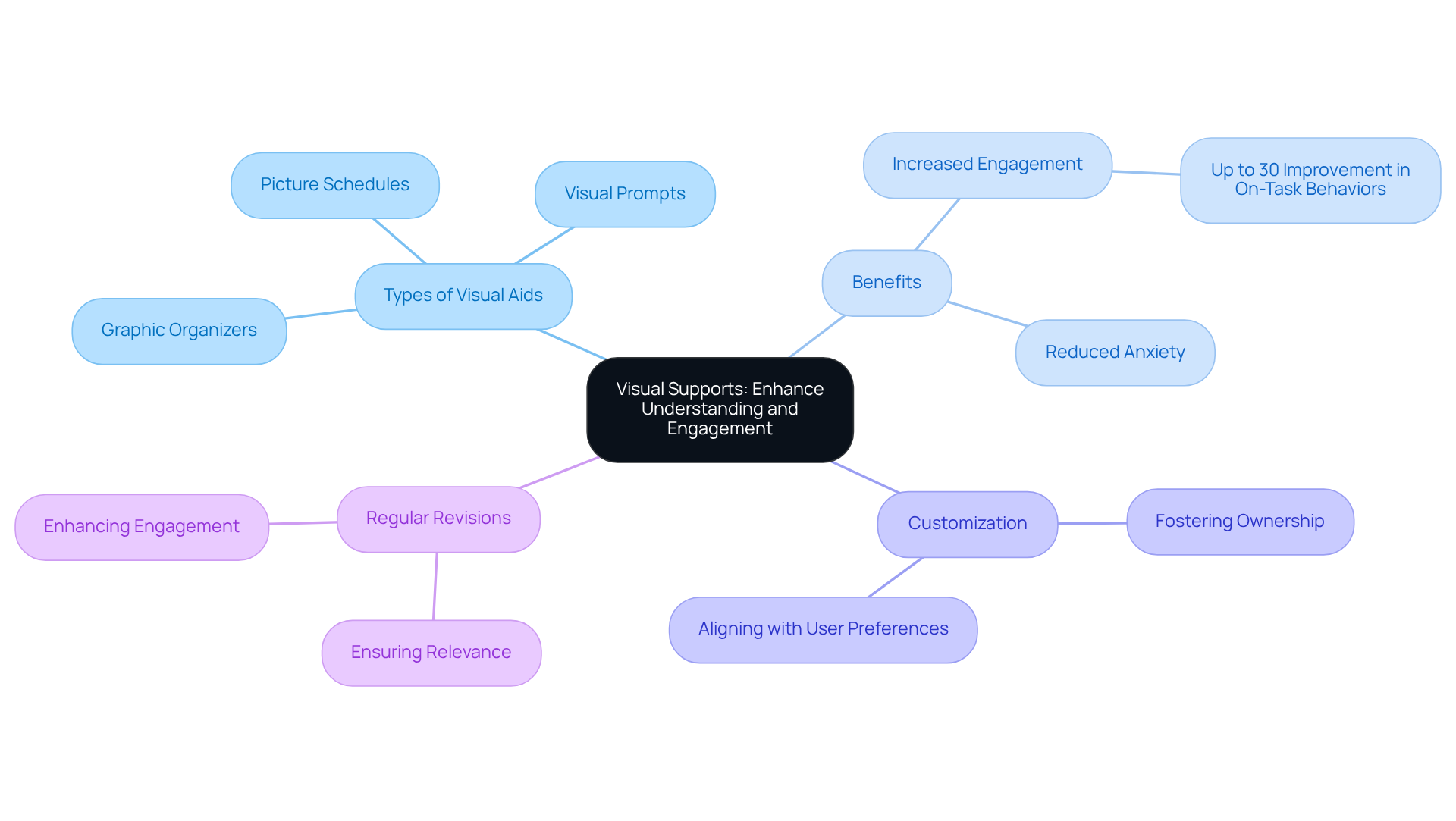
Individualized interventions stand as a cornerstone of effective ABA therapy. By conducting thorough evaluations to grasp each individual's strengths, challenges, and preferences, therapists can utilize motivating operations to design customized treatment plans that precisely address specific needs. This not only enhances engagement but also significantly increases the likelihood of achieving meaningful progress.
Have you considered how tailored interventions could transform your practice? Regularly reviewing and adjusting these motivating operations based on client feedback ensures that therapy remains relevant and impactful.
Enhancing outcomes in ABA therapy necessitates a multifaceted approach encompassing motivating operations, personalized interventions, and strategic modifications. The significance of employing various techniques—such as goal setting, reinforcement strategies, environmental adjustments, and choice opportunities—cannot be overstated, as these foster client engagement and progress. Each of these elements is crucial in tailoring therapy to meet individual needs, thereby maximizing effectiveness and satisfaction.
Key insights from this discussion underscore the importance of:
By leveraging these strategies, therapists can cultivate a more supportive and responsive therapeutic environment that not only motivates clients but also empowers them to take an active role in their treatment journey.
As the demand for effective ABA therapy continues to escalate, it is essential for practitioners to embrace these innovative approaches. By prioritizing individualized interventions and consistently assessing the needs of clients, therapists can ensure their methods remain relevant and impactful. This commitment to enhancing ABA therapy outcomes benefits clients and contributes to the overall advancement of the field.
What is Hire ABA and what services does it provide?
Hire ABA is a specialized recruitment platform designed for Board Certified Behavior Analysts (BCBAs). It simplifies the job search process by using advanced algorithms to match candidates with job opportunities that align with their skills, preferences, and career aspirations.
How does Hire ABA improve the recruitment process for BCBAs?
Hire ABA improves recruitment by leveraging advanced job fit scoring to assess resumes and identify optimal job matches. This streamlined process saves time for job seekers and helps employers efficiently find the right talent.
What is the projected demand growth for BCBAs over the next decade?
The demand for Board Certified Behavior Analysts (BCBAs) is projected to grow by 22% over the next decade, indicating a significant need for effective recruitment strategies.
What is the SMART criteria in goal setting for ABA treatment?
The SMART criteria stands for Specific, Measurable, Achievable, Relevant, and Time-bound. It helps therapists create clear and personalized objectives that enhance participant engagement and facilitate progress tracking.
How can reinforcement strategies enhance client motivation in ABA therapy?
By identifying and utilizing preferred reinforcers, such as verbal praise or access to enjoyable activities, therapists can increase motivation and compliance in clients. Research shows that offering a variety of reinforcers can lead to higher motivation levels.
What impact do multiple reinforcement options have on client motivation?
Clients demonstrate a 30% increase in motivation when presented with multiple reinforcement options compared to a single type. This variety helps maintain interest and improves the effectiveness of interventions.
How can therapists customize interventions based on individual clients' reinforcers?
Therapists can customize interventions by understanding the specific types of reinforcers that resonate with each client, whether they are social, tangible, or activity-oriented. This personalization can lead to better outcomes in ABA practices.
Our expert recruitment strategies and AI-driven sourcing ensure that you receive top-notch candidates quickly, without compromising on quality. Whether you’re looking for BCBAs, Clinical Directors, or RBTs, we’ve got you covered.